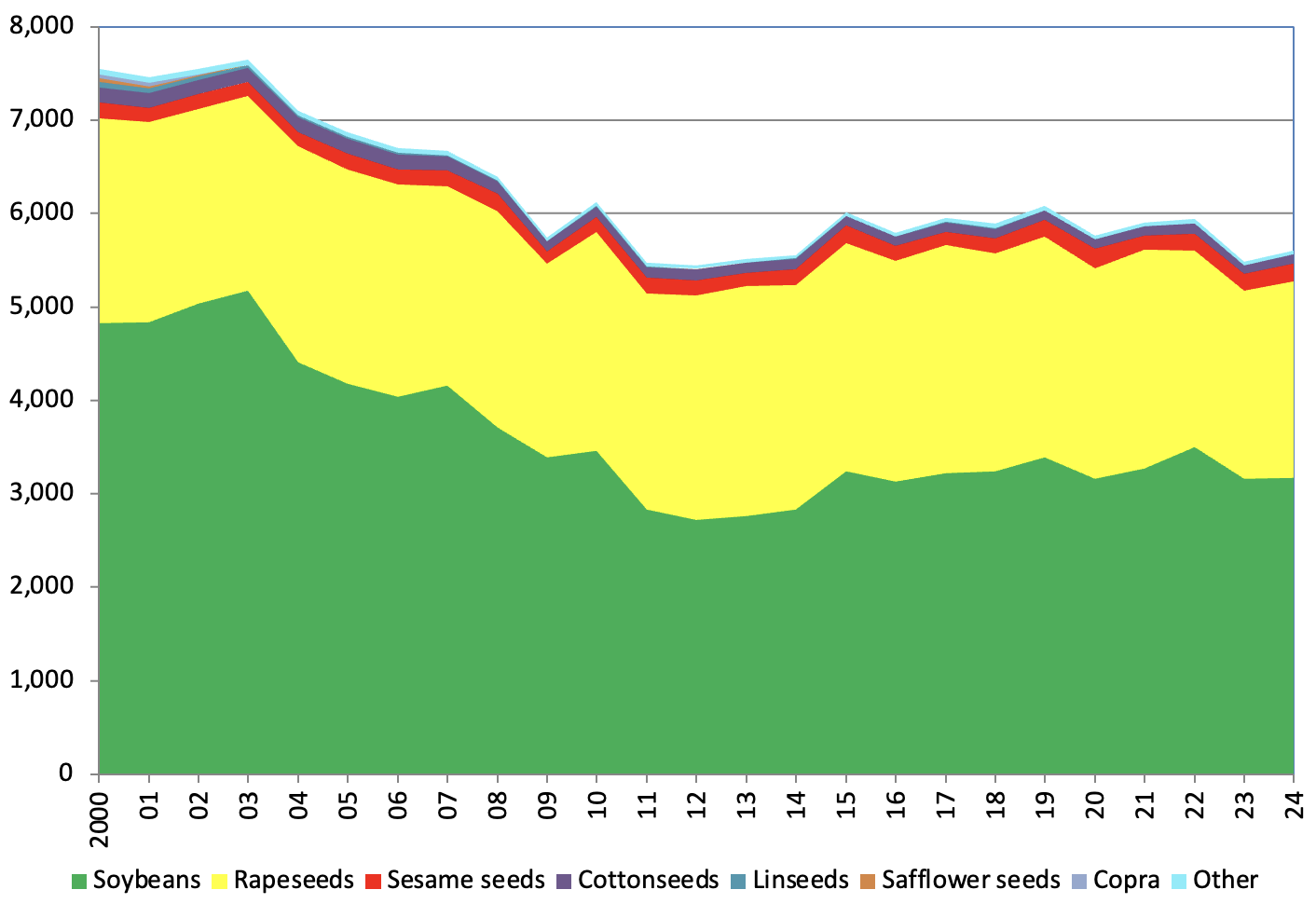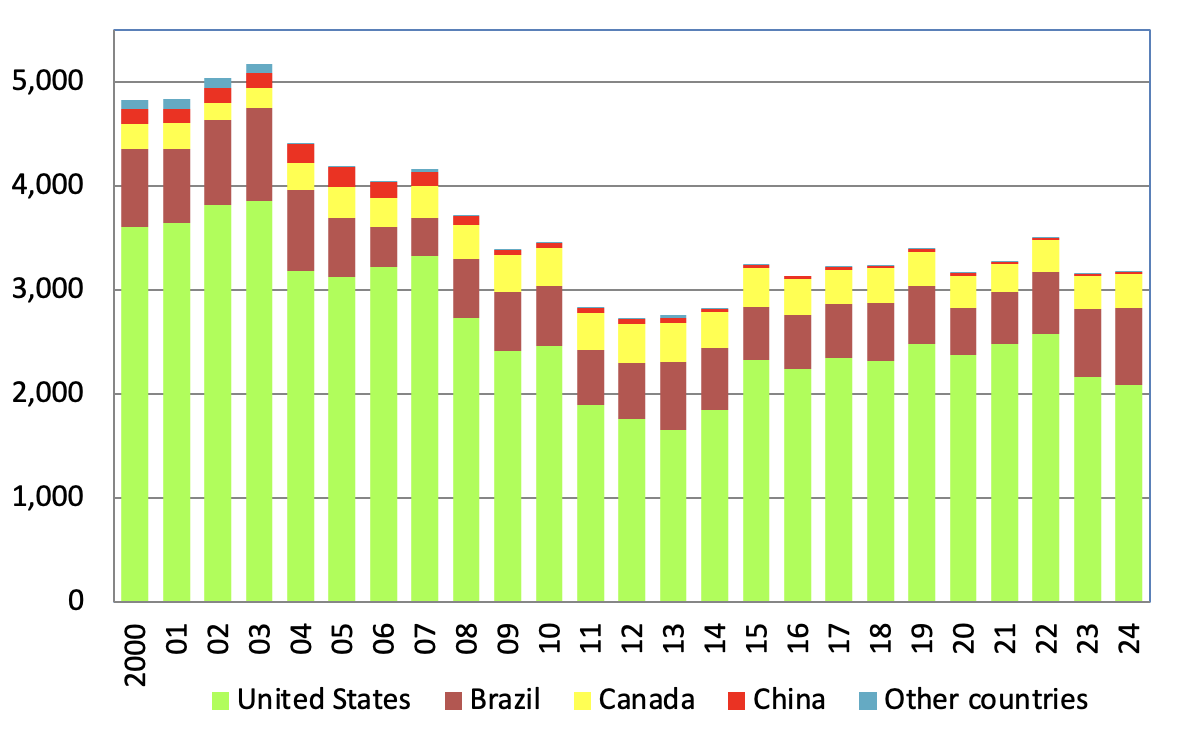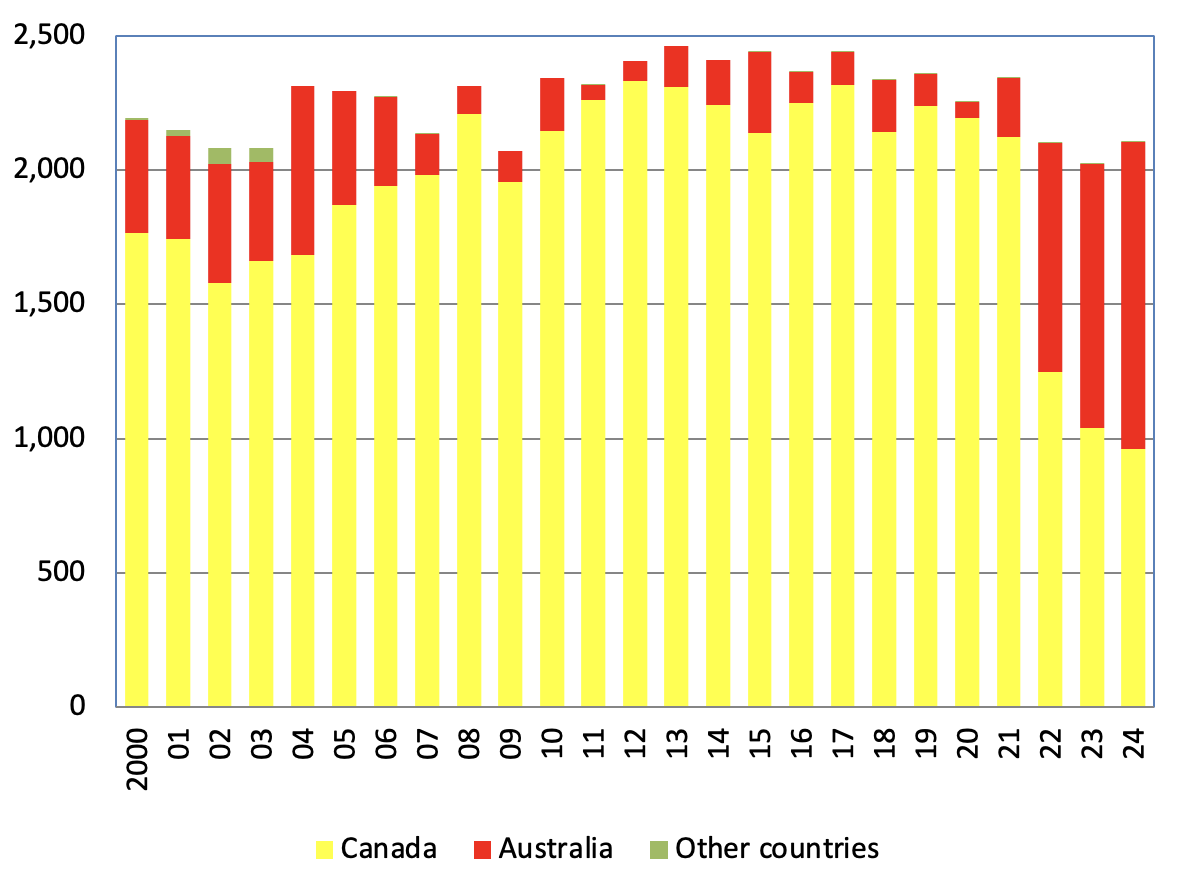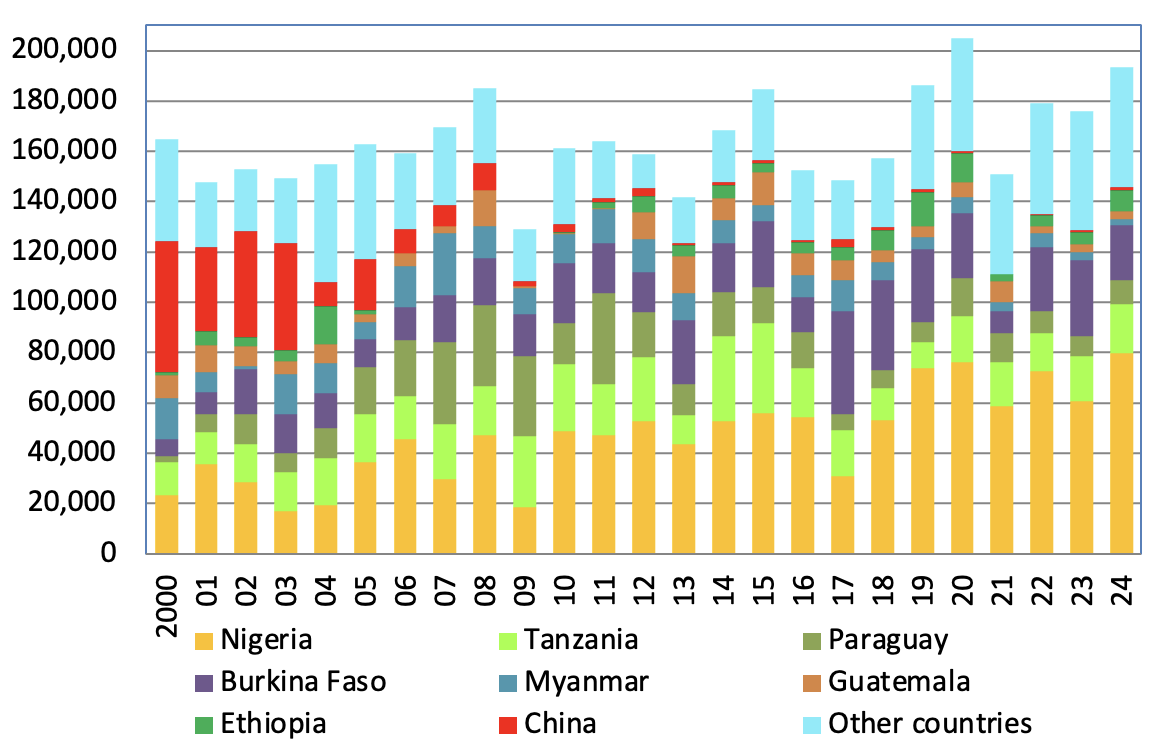Almost all oilseeds used as the raw material for vegetable oil in Japan are imported from overseas. The import amount has decreased since 2004 in conjunction with a decrease in soybean expression. The total import amount in 2019 was 6.09 million tons, which is a decrease of 1.56 million tons from the peak of 7.65 million tons in 2003. In 2020, the amount further decreased to 5.77 million tons due to the impact of the COVID-19 pandemic. The amount recovered to 5.91 million tons in 2021 and 5.94 million tons in 2022. However, the amount fell to 5.48 million tons in 2023 due to decreased consumption of products caused by the impact of rising sales prices. In 2024, product consumption recovered partly due to increased demand associated with inbound tourism, and the amount of rapeseed, sesame, soybeans and other products are increased to 5.61 million tons. The total import amount for soybeans also includes soybeans used in foods such as tofu and natto (called "soybeans for food products").
Figure 20: Change in import amount for oilseeds in Japan
(Unit: 1,000 tons)

Source: Trade Statistics (MOF)
What kind of countries does Japan import oilseeds from? Put simply, imports of soybeans and rapeseeds are concentrated on certain few countries, while imports of sesame seeds are distributed across a large number of supplier countries. As previously discussed in the section on the global supply of oilseeds, only certain few countries have the ability to supply soybeans and rapeseeds to other countries. These conditions can also be observed in the import of soybeans by Japan. Almost all of soybeans used for expression in Japan are supplied by two countries: the United States and Brazil.
Figure 21: Changes in the amount of Japan soybean imports by country
(Unit: 1,000 tons)

Source: Same as Figure 20
Even fewer countries are capable of supplying rapeseeds. As shown in Figure 22, Japan recently depends on Canada for almost all rapeseed imports. Every year, Japan holds periodic joint public-private sector discussions (Japan-Canada Rapeseed Conference) in order to strengthen trust and ensure stable imports of rapeseeds.
We also established an opportunity for exchanging information with Australia (Japan-Australia Information Exchange Meeting), thereby strengthening our relationship of trust and striving to stabilize imports.
Due to increased production amount in Australia in recent years, import amount has been increasing since 2022 following the deterioration of Canada’s crop in 2021.
Figure 22: Changes in the amount of Japan rapeseed imports by country
(Unit: 1,000 tons)

Source: Same as Figure 20
As opposed to soybeans and rapeseeds, the import of sesame seeds is distributed among numerous supplier countries. Sesame seeds have a low harvest yield and are not suitable for mechanized farming. Accordingly, this crop is avoided in advanced nations and Japan is forced to rely upon supply from emerging nations. Each country supplies a small amount and production fluctuates widely. In order to obtain the required amount of soybeans, Japan imports from 20 to 30 countries every year.
Until the mid-2000s, China was important supplier of sesame seeds to Japan. However, China lost the ability to supply to Japan due to an increase in domestic demand in China and a poor crop in 2004. Instead, China became a major importer of sesame seeds from other countries. India is a major supplier of sesame seeds on the scale of China, but Japan does not import sesame seeds from India. India lacks sufficiently uniform control of pesticides by the government and there is concern that residual pesticides will exceed the permitted values. Consequently, Japan does not import any sesame seeds from India. Also, several years ago, a large amount of residual pesticides was detected for sesame seeds from Ethiopia and Japan stopped imports from 2006. However, through technical cooperation from Japan, controls for the use of pesticides in Ethiopia have become much stricter. Ethiopia improved its ability to analyze residual pesticides at the time of shipping and concerns regarding residual pesticides were resolved, so Japan resumed imports from 2010. The import amount for sesame seeds includes sees used in food products in addition to expression. From among the 193,000 tons imported in 2024, 121,000 tons were used for expression.
Figure 23: Changes in the amount of Japan sesame seed imports by country
(Unit: tons)

Source: Same as Figure 20




